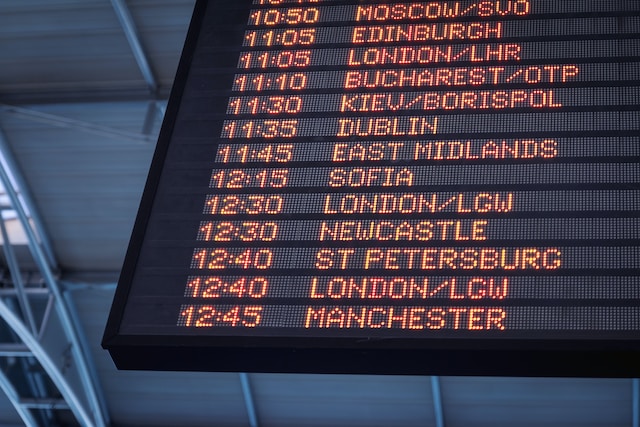If you are planning a trip to Europe, then you should know about the Schengen VISA. This VISA is going to make your life simpler while travelling in Europe. Schengen VISA allows you to travel across the Schengen countries without having required VISA for each of the nation. You just need to meet some requirements for this VISA and you are all set.
In this blog we have listed out all the details of Schengen VISA, how to apply, types of Schengen VISA, the countries it covers, the minimum requirements, and many other facts around it.
What is Schengen VISA?
Schengen VISA which is also known as Europe VISA, is used for travelling in Europe. It is used for short stay in European countries for tourism or for business purpose. It allows a stay of up to 90 days, across many European countries. With this VISA traveler are not subjected to border checks when travelling across the Schengen countries.
You might not need additional VISA across Schengen countries, but you are going to need a valid passport. Apart from this you will also need stamps of the country you are passing through, or else you will be required to prove your stay duration in the Europe.
What are Schengen Countries?
Since the Schengen agreement of 1985, 27 countries allow VISA free travel and no border checks. The countries that are part of Schengen Zone are – Austria, Belgium, Czech Republic, Croatia, Denmark, Estonia, Finland, France, Germany, Greece, Hungary, Iceland, Italy, Latvia, Liechtenstein, Lithuania, Luxembourg, Malta, Netherlands, Norway, Poland, Portugal, Slovakia, Slovenia, Spain, Sweden, and Switzerland.
What is the 90 – 180 days rule of Schengen VISA?
The 90 – 180 rule is applicable to the multiple entry VISA holders. It means that once you first enter the Schengen country, you get a time window of 180 days, and in these 180 days you cannot spend more than 90 days in any of the Schengen countries.
Types of Schengen VISA
There are four types of Schengen VISA, Type A, Type B, Type C, and Type D. The most common types you will be using are A, B, C for a short stay in Schengen countries. Let us elaborate more on the types of Schengen VISA.
Type A Schengen VISA – It is also known as Airport Transit VISA. This type of VISA is required for people who are travelling from one Non Schengen country to another non Schengen Country, but have a connecting flight in one of the Schengen countries. Please note that this type of VISA doesn’t allows you to enter the Schengen country by leaving the airport.
Type B Schengen VISA – This type of VISA is required when you have to commute through a Schengen country to reach another non Schengen country. The period of transit is however limited to 5 days.
Type C Schengen VISA – This type of VISA is the most commonly used. It is required if you want to travel in Schengen countries for a period of 90 days over a total 180 day period. It is issued by the embassies and consulates of the Schengen countries. This VISA is further divided into 3 types depending on the nature and the purpose of your trip.
Single Entry VISA – This type of VISA lets you enter a Schengen country within the duration of your VISA. But it expires as soon as you leave that country.
Double Entry VISA – This type of VISA lets you enter a Schengen country and make a exit, but two times, within the duration of your VISA.
Multiple Entry VISA – This VISA lets you enter and exit a Schengen country as many times as you would want to, but in duration of 90 days over a period of total 180 days.
What reasons of visit will require Schengen VISA?
You will required to have a Schengen VISA if you are planning to visit one or more than one European Countries that fall under the Schengen region. The reasons can be one of many, if you plan to visit Schengen Countries for tourism or for recreation, or if you are visiting Schengen countries for business, or if you are visiting Schengen countries for short term educational or research purpose, or if you are visiting to meet family members or friends, or if you are transiting through Schengen countries, or if you are in Schengen countries for medical treatment.
What are the documents required for the application of Schengen VISA?
Here are some of the documents required that you will be needing for the Schengen VISA.
A duly completed VISA application form needs to be submitted into the embassy of the country in Schengen region that you intend to visit.
You will be needing two photos of yours which cannot be taken before 3 months from the date when you are applying for the Schengen VISA.
A valid Passport will be required which need not to be older than 10 years and must have a validity three months beyond the date when you are planning to leave the Schengen country.
A round trip itinerary is required which has details when you will enter and leave the Schengen region.
You will need to have a travel health insurance which covers a minimum of 30,000 Euros in case of any health emergencies while you are travelling.
You will need to have a proof of accommodation, i.e. the place where you will be staying through out your stay in the Schengen region.
You will also need to have proof of financial means that establish you will be able to incur the expenses while you will be travelling in Schengen Region. This could be proved by submitting bank statements, or a letter of sponsorship by a person who is going to take care of your expenses while in Schengen region.
You will also need a proof of payment of application fee.
Documents required for the minors, for application of Schengen VISA?
If a minor is travelling to Schengen countries with you or without you, then as a parent or the guardian you must submit the following documents for the processing of the Schengen VISA.
The birth certificate of the minor is the first document that you are going to need.
Both the parents of the minors must duly sign the application form.
If the minor is under the custody of only one parent, then in that case a family court decree is issued.
Identity proofs and copy of passport of both the parents will be required for the processing.
If the minor is travelling alone and is not accompanied by their parents, then an authorization by parents or the guardians is required and it has to be notarized.
What are the minimum funds required for the stay?
One of documents required for the Schengen VISA requires you to show the minimum funds you should have before applying for the VISA. Different European countries in the Schengen region have different fund requirements, i.e. the amount of money you will need to stay there. We have listed some of the countries with the minimum you will require there.
Norway – 54 EUR per day
Belgium – 95 EUR per day
Portugal – 75 EUR per day
Germany – 45 EUR per day
Denmark – 65 EUR per day
France – 120 EUR per day
What is the Application Fee for Schengen VISA?
A non refundable fee will be required when you will be applying for the Schengen VISA. The fee will need to be paid at the time VISA application in the embassy or consulate. IT can be paid by cash, debit card, or credit card. The amount to be paid for fee is as listed.
Adult – 80 Euros
Children between 6 to 12 years of age – 40 Euros
Children below 6 years of age – Need not to pay any application fee
Where to apply for Schengen VISA?
To get the Schengen VISA one must approach the embassy of the Schengen Country that you intend to visit. If that country doesn’t has an embassy or consulate in your country, then you need to approach the local representatives of that Schengen Country.
If you are planning to visit multiple Schengen countries then you need to apply in the embassy of the country where you will be staying for maximum period of time. IF there are two countries that hold equal number of maximum days of your visit, then approach the embassy of the country from these two which you will be visiting first. If you want to keep your plans flexible, then make an application in the embassy of Lithuania, or Estonia. They process the application faster due to lesser applications.
When to apply for Schengen VISA?
You have made all your plans for exploring Europe and now you just need the Schengen VISA. Ideally you should apply for the Schengen VISA 6 months before than your departure date. The minimum time duration can be 2 months before, and do delay beyond that.
What are the most common reasons on Schengen VISA getting denied?
There can be several reasons for the denial of Schengen VISA. It could be that consular officers were not able to get required information about your application hence they couldn’t determine your eligibility. It could also happen that the information provided to consulate was misleading or false which led to the Schengen VISA rejection. It could also be that the applicant failed in the in person interview with the consular officer. To avoid such circumstances we have listed some mistakes that you should definitely avoid before making a VISA application.
The information that you provided doesn’t matches with the information in documents.
Not giving ample amount of time for the VISA application to be processed, which often happens when you make last minute plans or submit the application only weeks before the departure.
You didn’t purchase an adequate travel medical insurance.
You didn’t met the financial requirement benchmarks. So be sure to calculate the expenses beforehand and keep adequate amount in the bank account whose statement you are going to provide.
Your passport is damaged and many parts of the passport are not even readable.
Submitting false or forged documents is a big no, as they can also land you in legal trouble.
Your proof of accommodation was not adequate and the consular officers couldn’t determine the validity of it.
In case of denied Schengen VISA application, should you re apply or appeal?
In case of denial you have two options, either to reapply or to appeal the decision. If the VISA was rejected once, it could meet the same fate again, so re application of VISA is not advisable. But you can always appeal. The simple process of appeal is to gather all the missing documents, write an appeal letter, and submit the documents and letter to the consulate.
Europe is all you need, along with a Schengen VISA!









































